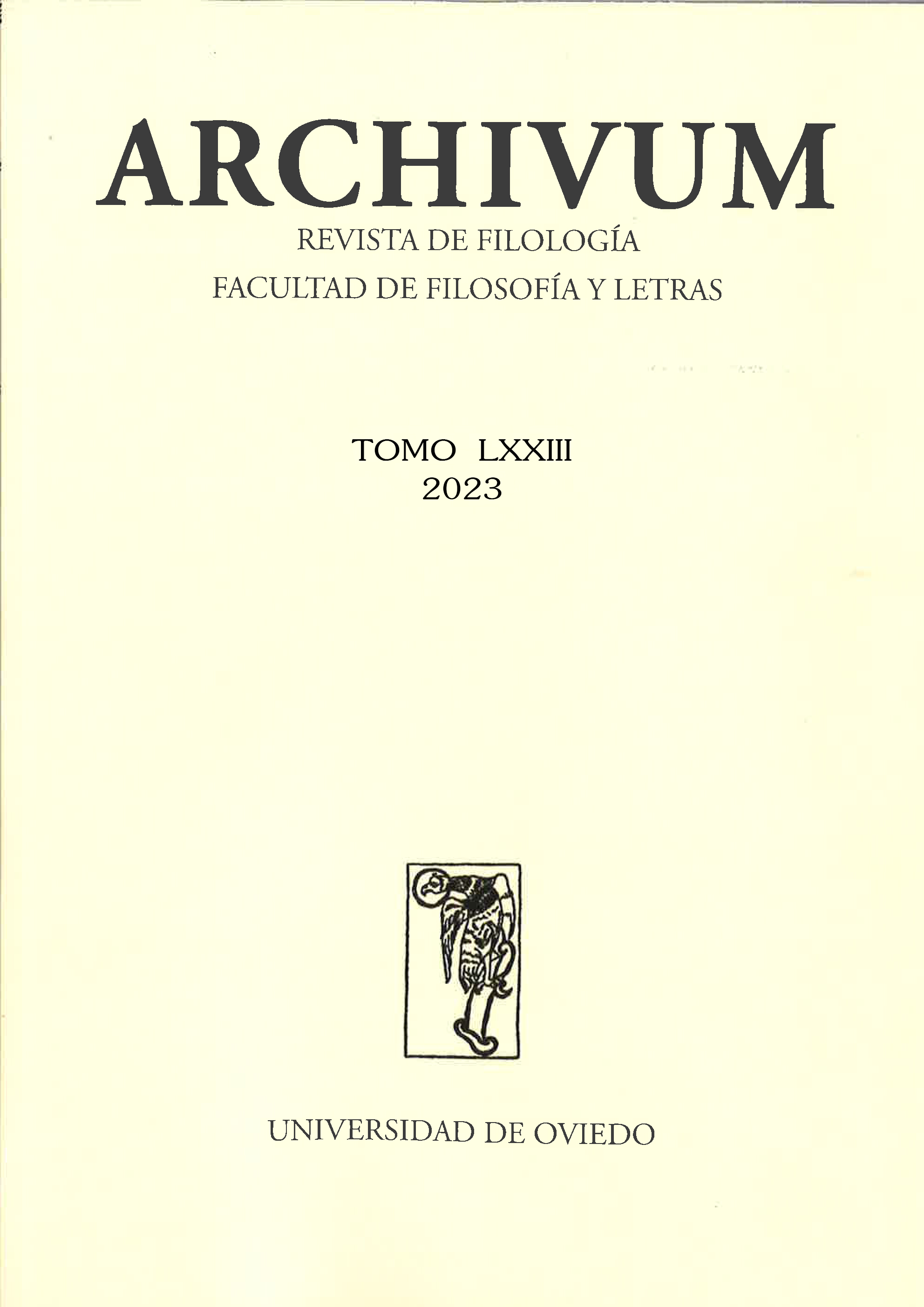Resumen
La capacidad del arte y del cine de crear sensaciones de inquietud y angustia en los espectadores ha recibido una gran atención crítica en los últimos años (cf. Masschelein 2012; Lehmann 2016). Si bien la literatura posee las mismas herramientas que las artes visuales para trasladar tales sensaciones de desasosiego, hasta el momento los estudios literarios no han abordado con la misma extensión el estudio de la categoría estética de lo inquietante más allá del análisis de la literatura de terror (cf. Kühn-Rudenko 2011; Anderson, 2017). A partir de las tesis de Freud y de Jentsch, este estudio pretende establecer una metodología para el análisis de lo inquietante en el ámbito literario y examinar los recursos y estrategias estilísticas que contribuyen a materializar en un texto tales sensaciones. Con este fin, se han escogido dos textos de Herta Müller y Aglaja Veteranyi, ambas autoras de origen rumano cuya lengua literaria es el alemán y cuyos textos destacan por integrar experiencias de dislocación, extrañamiento y ruptura.
Citas
Acosta Gómez, L. A. (2012). «Los exilios de Herta Müller», Revista de Filología Románica, añejo, vol. VII, 425-441. https://doi.org/10.5209/rev_RFRM.2011.38715
Bachelard, Gaston (1969). The Poetics of Space. Boston: Beacon Press.
Homi Bhabha (1994). The Location of Culture. New York: Routledge.
Coe, Richard (1984). When the Grass was Taller. Autobiography and the Experience of Childhood. Yale University Press.
Eckhard, Petra (2011). Chronotopes of the Uncanny. Time and Space in Postmodern New York Novels. Paul Auster’s City of Glass and Toni Morrison’s Jazz. Transcript.
Eke, Norbert Otto (1991). Die erfundene Wahrnehmung. Annäherung an Herta Müller. Igel-Verlag.
Freud, Sigmund (1990). Obras Completas. Vol. 17. (1917-19) De la historia de una neurosis infantil y otras obras. Amorrortu Editores.
Günther, Petra (1998). «Kein Trost, nirgends. Zum Werk Herta Müllers». En: A. Erb, (Ed.), Baustelle Gegenwartsliteratur. W. G. Sebald, Anne Duden, Herta Müller. Transcript.
Haines, Brigid/ Littler, Margaret Littler (1998). «Gesprach mit Herta Müller», en: Haines, Brigid (ed.), Herta Müller (pp. 14-24). University of Wales Press.
Jentsch, Ernst (1906). «Zur Psychologie des Unheimlichen», Psychiatrische-Neurologische Wochenschrift, 22, 195-205.
Kühn-Rudenko, Kateryna (2011). The Uncanny Narrated: Functions of Narrative Strategies in Different Types of Uncanny Representation in Stephen King's Novels It and Firestarter. WVT - Wissenschaftlicher Verlag Trier.
Lehman, Florian (2016). Ordnungen des Unheimlichen: Kultur - Literatur – Medien. Königshausen & Neumann.
Leitgeb, Christoph (2020). Unheimliche Erinnerung - erinnerte Unheimlichkeit. Nationalsozialismus im literarischen Gedächtnis. Wilhelm Fink.
Masschelein, Anneleen (2012). The Unconcept: The Freudian Uncanny in Late-Twentieth-Century Theory. SUNY.
Müller, Herta (2017). Niederungen. Carl Hanser.
Nora, Pierre (1998). Realms of History: Rethinking the French Past. Columbia University Press.
Predoiu, Graziella (2001). Faszination und Provokation bei Herta Müller. Eine thematische und motivische Auseinandersetzung. Peter Lang.
Royle, Nicholas (2003). The Uncanny. Manchester University Press.
Schifferle, Judith (2004). «Zwei Autorinnen sehen Fern. Aglaja Veteranyi und Herta Müller — zwei aus Rumänien stammende deutschsprachige Autorinnen im Vergleich», Zeitschrift für Literatur 15.
Stockwell, Peter /Whiteley, Sara (2014). The Cambridge Handbook of Stylistics. Cambridge University Press.
Tatar, Maria (1981). «The Houses of Fiction: Toward a Definition of the Uncanny». Comparative Literature, 33 (2), 167-182.
Todorov, Tzvetan (1994): Introducción a la literatura fantástica. Ediciones Coyoacán.
Veteranyi, Aglaja (2019). Warum das Kind in der Polenta kocht und andere Geschichten. Penguin.
Vidler, Anthony (1997). The Architectural Uncanny: Essays in the Modern Unhomely. MIT Press.
Zehschnetzler, Hanna (2021). Dimensionen der Heimat bei Herta Müller. De Gruyter. https://doi.org/10.1515/9783110694758
Zimmerman, Emma (2015). «“Always the same stairs, always the same room”: The Uncanny Architecture of Jean Rhys's Good Morning, Midnight.» Journal of Modern Literature, 38, 74-92.

Esta obra está bajo una licencia internacional Creative Commons Atribución-NoComercial-SinDerivadas 4.0.


